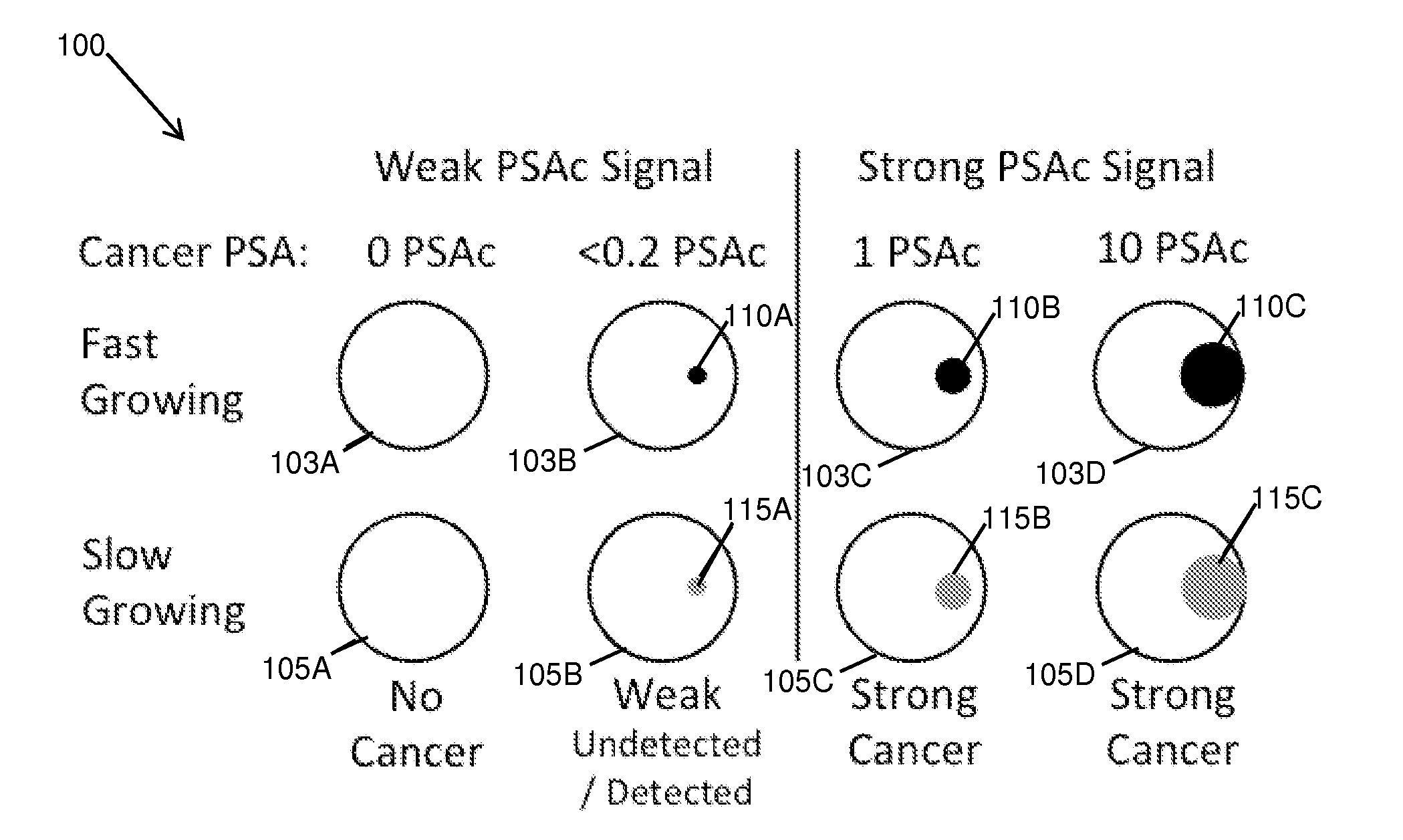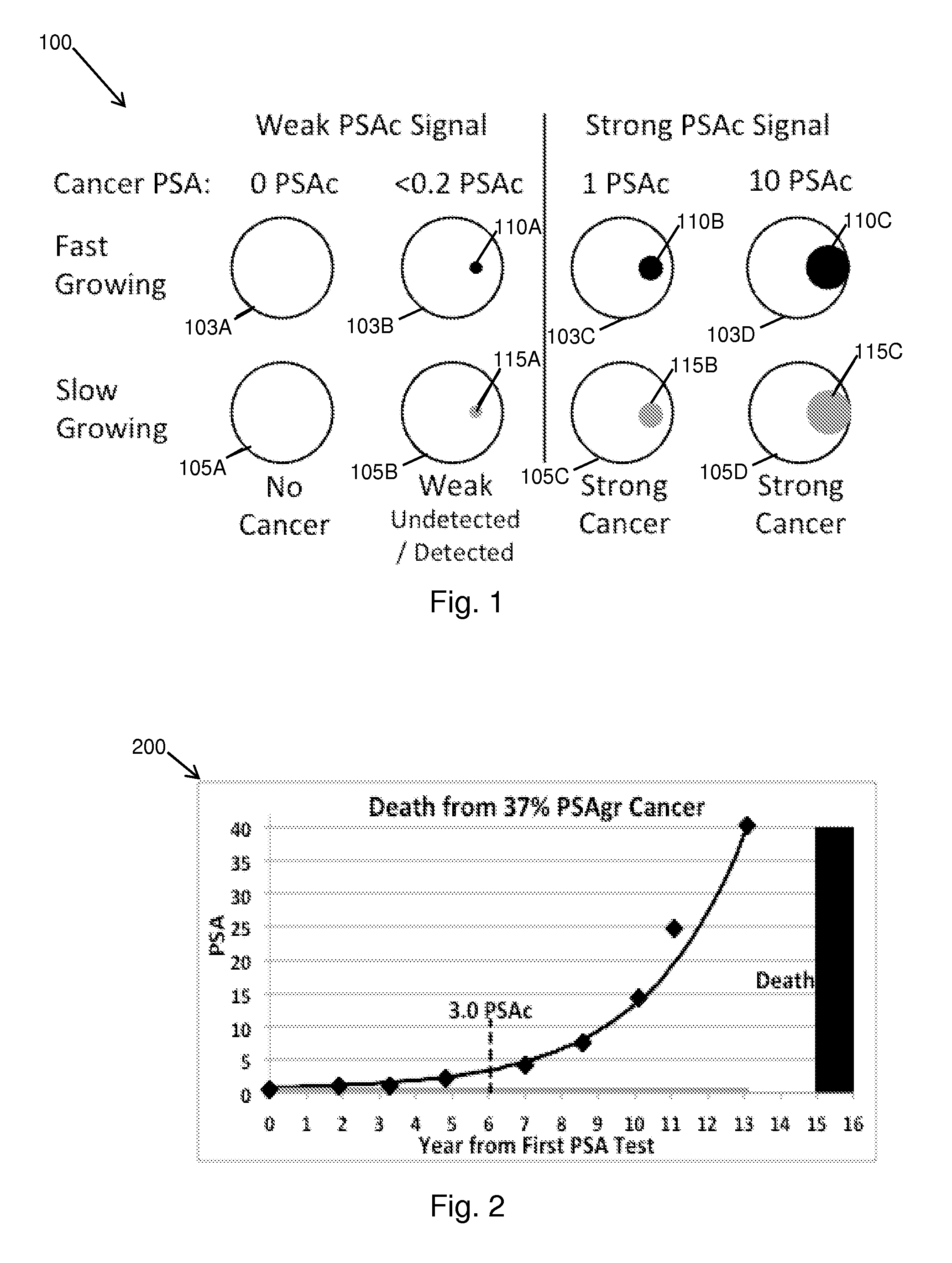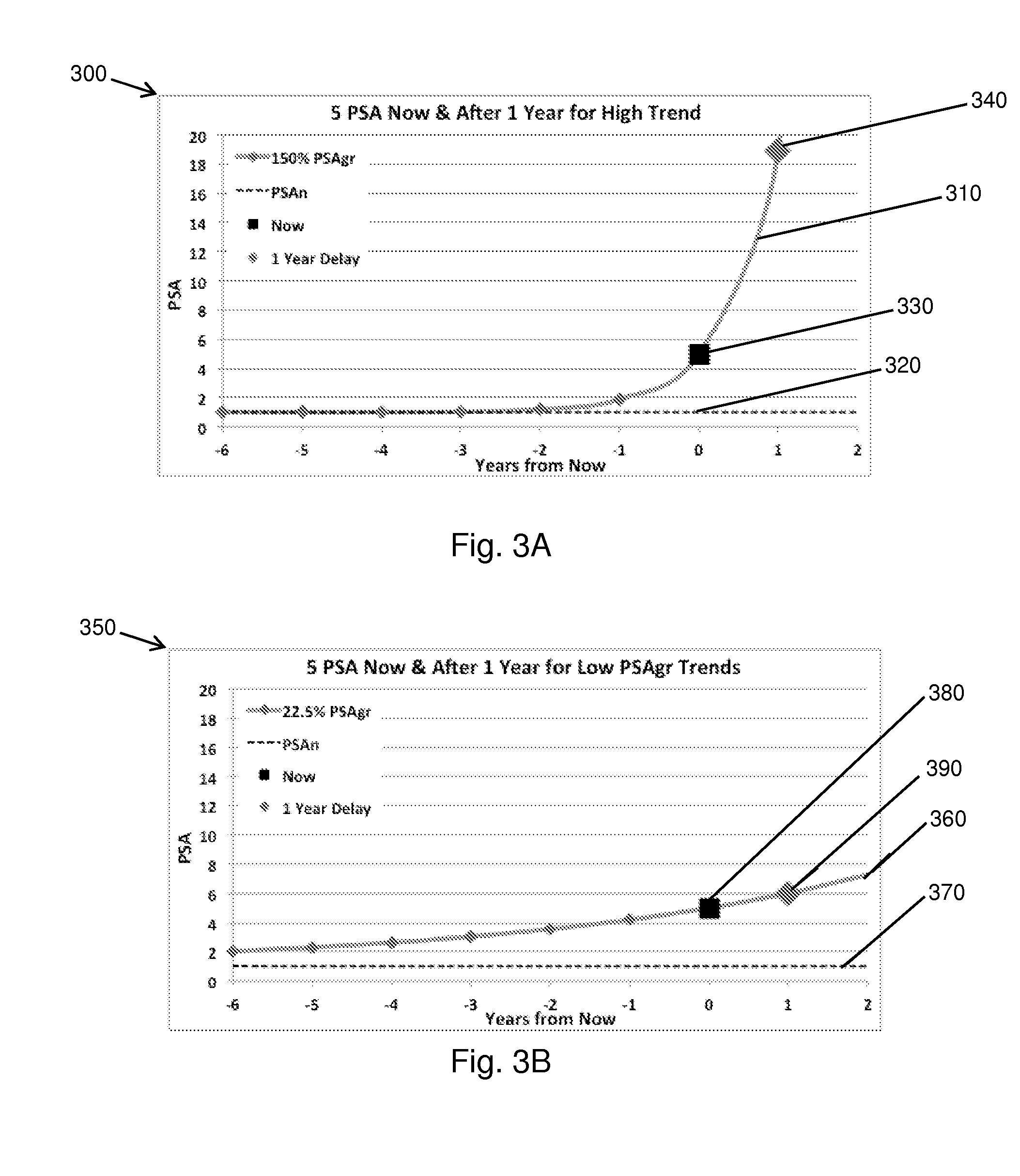Dynamic analysis and dynamic screening
a dynamic analysis and screening technology, applied in the field of dynamic analysis and dynamic screening, can solve the problems of high number of biopsies and treatment, serious side effects of treatment such as surgical removal of the prostate, and impotence and incontinence, so as to reduce side effects, reduce the harmful effects of screening practices, and improve treatment
- Summary
- Abstract
- Description
- Claims
- Application Information
AI Technical Summary
Benefits of technology
Problems solved by technology
Method used
Image
Examples
example 1
A. Example 1
Dynamic Screening Decision Process
[0557]A comparison of a hypothetical high and a low-risk patient, both with a current PSA value of 5.0, is shown by the graphs 1700T, 1700B of FIG. 17. Dynamic Analysis quantitates the PSA trend for each patient to calculate PSAgr and PSAn (1.0 in these cases, also shown), which allows Dynamic Screening to recommend different medical actions for each patient, despite their having the same PSA test result. Here, the high-risk patient has a PSAgr of 150%, as shown by FIG. 17 Top 1700T; while the low-risk patient has a PSAgr of 22.5%, as shown by FIG. 17 Bottom 1700B. In this example, the Dynamic Screening process projects each PSA trend forward by a year and looks at the future PSA value, as shown in FIG. 17 Top 1700T and Bottom 1700B.
[0558]In some embodiments, Dynamic Screening will recommend different thresholds for different medical actions. FIG. 18 Top 1800T depicts an example PSA trend for the high-risk patient along with lines markin...
example 2
B. Example 2
Dynamic Analysis of PSA
[0569]A central insight of Dynamic Analysis of PSA is that a man's PSA history contains valuable information about what is occurring in his prostate that can be interpreted using appropriate methods. The graph in FIG. 2 shows PSA history typical of a man who died from prostate cancer. (Source: Baltimore Longitudinal Study of Aging.) Key Dynamic Analysis findings include: 1) Smooth fast exponential growth in PSA above a no-cancer baseline is characteristic of progressing cancer; and 2) Faster exponential growth is characteristic of more deadly cancer. The implications include: 1) Smooth, fast exponential growth in PSA above a baseline can justify early detection at very low PSA levels for effective treatment; 2) Variable, slow growth in PSA to moderate levels may not be primarily caused by progressing cancer and a biopsy may not be justified; and 3) Possibly variable, moderate growth in PSA may justify a biopsy for some men if PSA eventually reaches...
example 3
C. Example 3
Benefits of Dynamic Differential Analysis
[0570]Retrospective analysis of Tyrol (Austria) data suggests substantial benefits of monitoring for differential deceleration in PSA after Differential Treatment with antibiotics. Differential Treatment with antibiotics in conjunction with PSA trend analysis can reduce false positive biopsies by 90% to 97% and allows setting low PSA thresholds for High-Risk PSA trends with minimal dilution of early detection benefits.
[0571]i. Background
[0572]As part of the Tyrol Prostate Cancer Demonstration Project, PSA tests were introduced in the Tyrol region of Austria, in 1988-1989 and, since 1993, have been offered to all men aged 45-74 years. In Tyrol, where PSA testing is free of charge and is widely accepted, more than three quarters of men in this age group had at least one PSA test in the period 1993-2003, and some of them have PSA tests regularly. By 2008 the Tyrol prostrate cancer death decreased by 50% from its peak compared to a 43...
PUM
 Login to View More
Login to View More Abstract
Description
Claims
Application Information
 Login to View More
Login to View More - R&D
- Intellectual Property
- Life Sciences
- Materials
- Tech Scout
- Unparalleled Data Quality
- Higher Quality Content
- 60% Fewer Hallucinations
Browse by: Latest US Patents, China's latest patents, Technical Efficacy Thesaurus, Application Domain, Technology Topic, Popular Technical Reports.
© 2025 PatSnap. All rights reserved.Legal|Privacy policy|Modern Slavery Act Transparency Statement|Sitemap|About US| Contact US: help@patsnap.com



